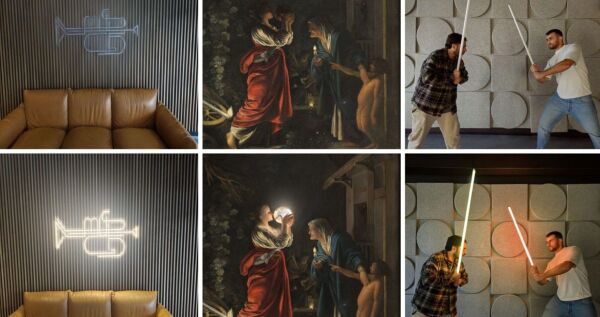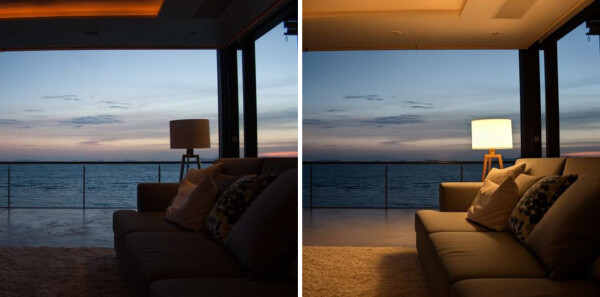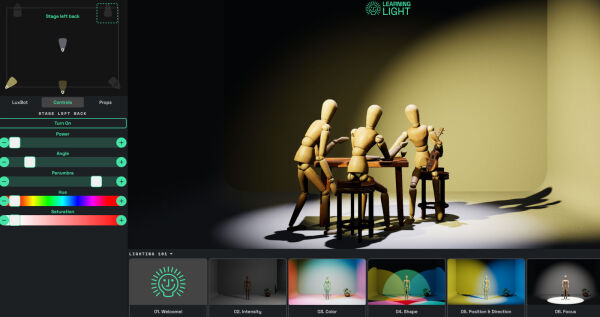[17:05 Sun,25.May 2025 by Thomas Richter] |
Researchers from Google and several Israeli universities have presented a new method for re-illuminating photos retroactively. The method, based on diffusion models, enables precise control of light sources in images without requiring complex 3D reconstruction or multi-view data.  Google LightLab LightLab allows both the gradual adjustment of the intensity and color of light sources visible in the photo, as well as the control of ambient light and even the insertion of virtual point light sources into a scene. On the project page, in addition to many examples, there is also an interactive demo with which you can try out the LightLab algorithm yourself. The core innovation of LightLab is the use of diffusion models for realistic changes in lighting situations within a single image. LightLab uses the "photorealistic prior knowledge" of the diffusion models to realistically simulate complex lighting phenomena such as indirect lighting, shadows or reflections - directly in the image space. The basis for this is training data, which consists of a few real photo pairs and an extensive collection of synthetic renderings. This combination enables a targeted disentanglement strategy in which individual light sources can be isolated and manipulated separately.  Google LightLab In contrast to classic relighting methods, which mostly rely on inverse rendering methods with multiple camera views, LightLab dispenses with geometric reconstruction or physically exact models. Instead, the method uses parametric control in linear color space. Light components are scaled and combined in sequences to achieve a controlled change in lighting - for example, through so-called "light switch" functions or color adjustment via user-defined control.  Google LightLab Also of interest is the possibility of inserting virtual light sources, even if no geometric scene information is available. This feature is based on the knowledge transfer from synthetic 3D data and shows the potential of deep learning methods to generate physically plausible results from image data alone. So far only the study has been published. However, if LightLab is available as code in the future, there would be numerous possible applications for it in photography, post-production for visual effects and also in video. With a LightLab app, even laypersons without in-depth technical knowledge could manipulate complex lighting conditions - an aspect that should be of interest in the field of mobile image editing apps or AI-supported creative software.  Google Light Workshop If you want to learn how to illuminate scenes effectively, you can do so with the help of another tool from Google that is already publicly available. Google offers online the deutsche Version dieser Seite: Google LightLab leuchtet Fotos nachträglich per KI aus |




